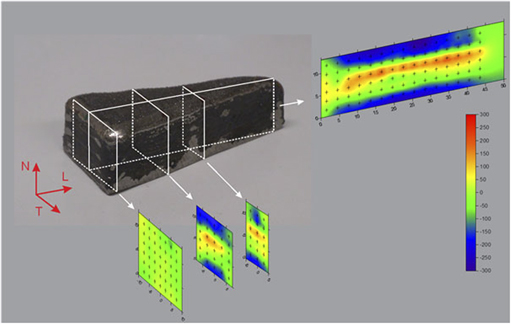Crossref Citations
This article has been cited by the following publications. This list is generated based on data provided by
Crossref.
Tapia, G.
Elwany, A.H.
and
Sang, H.
2016.
Prediction of porosity in metal-based additive manufacturing using spatial Gaussian process models.
Additive Manufacturing,
Vol. 12,
Issue. ,
p.
282.
Mertens, R.
Vrancken, B.
Holmstock, N.
Kinds, Y.
Kruth, J.-P.
and
Van Humbeeck, J.
2016.
Influence of Powder Bed Preheating on Microstructure and Mechanical Properties of H13 Tool Steel SLM Parts.
Physics Procedia,
Vol. 83,
Issue. ,
p.
882.
Kang, Jun-Yun
Yun, Jaecheol
Kim, Hoyoung
Kim, Byunghwan
Choe, Jungho
Yang, Sangsun
Yu, Ji-Hun
and
Kim, Yong-Jin
2017.
Microstructures of Powders and Additively Manufactured Objects of an Alloy Tool Steel for Cold-Work Dies.
Journal of Korean Powder Metallurgy Institute,
Vol. 24,
Issue. 3,
p.
202.
Buchmayr, Bruno
Panzl, Gerhard
Walzl, Alexander
and
Wallis, Christopher
2017.
Laser Powder Bed Fusion – Materials Issues and Optimized Processing Parameters for Tool steels, AlSiMg‐ and CuCrZr‐Alloys .
Advanced Engineering Materials,
Vol. 19,
Issue. 4,
Yan, J. J.
Zheng, D. L.
Li, H. X.
Jia, X.
Sun, J. F.
Li, Y. L.
Qian, M.
and
Yan, M.
2017.
Selective laser melting of H13: microstructure and residual stress.
Journal of Materials Science,
Vol. 52,
Issue. 20,
p.
12476.
Aboutaleb, Amir M.
Bian, Linkan
Elwany, Alaa
Shamsaei, Nima
Thompson, Scott M.
and
Tapia, Gustavo
2017.
Accelerated process optimization for laser-based additive manufacturing by leveraging similar prior studies.
IISE Transactions,
Vol. 49,
Issue. 1,
p.
31.
Ghasri-Khouzani, M.
Peng, H.
Rogge, R.
Attardo, R.
Ostiguy, P.
Neidig, J.
Billo, R.
Hoelzle, D.
and
Shankar, M.R.
2017.
Experimental measurement of residual stress and distortion in additively manufactured stainless steel components with various dimensions.
Materials Science and Engineering: A,
Vol. 707,
Issue. ,
p.
689.
Zuback, J.S.
and
DebRoy, T.
2018.
The Hardness of Additively Manufactured Alloys.
Materials,
Vol. 11,
Issue. 11,
p.
2070.
Breidenstein, B.
Brenne, F.
Wu, L.
Niendorf, T.
and
Denkena, B.
2018.
Effect of Post-Process Machining on Surface Properties of Additively Manufactured H13 Tool Steel.
HTM Journal of Heat Treatment and Materials,
Vol. 73,
Issue. 4,
p.
173.
Tucker, Brett E.
Nealley, W. H. Harrison
Dutta, Bhaskar
Nakano, Jinichiro
and
Maurice, David
2018.
Assessing Mechanical Behaviors of Additive Manufactured Alternating Layers of Inconel-718/H13 Tool Steel.
JOM,
Vol. 70,
Issue. 10,
p.
2277.
DebRoy, T.
Wei, H.L.
Zuback, J.S.
Mukherjee, T.
Elmer, J.W.
Milewski, J.O.
Beese, A.M.
Wilson-Heid, A.
De, A.
and
Zhang, W.
2018.
Additive manufacturing of metallic components – Process, structure and properties.
Progress in Materials Science,
Vol. 92,
Issue. ,
p.
112.
Bass, Lindsey
Milner, Justin
Gnäupel-Herold, Thomas
and
Moylan, Shawn
2018.
Residual Stress in Additive Manufactured Nickel Alloy 625 Parts.
Journal of Manufacturing Science and Engineering,
Vol. 140,
Issue. 6,
Tadano, Satoshi
Okano, Shigetaka
Hino, Takehisa
Ohnishi, Haruki
Mochizuki, Masahito
and
Nakatani, Yujiro
2018.
A Simplified Methodology for Estimating Residual Stresses in Powder-Bed Electron Beam Additive Manufacturing.
MATERIALS TRANSACTIONS,
Vol. 59,
Issue. 3,
p.
420.
Mugwagwa
Yadroitsev
and
Matope
2019.
Effect of Process Parameters on Residual Stresses, Distortions, and Porosity in Selective Laser Melting of Maraging Steel 300.
Metals,
Vol. 9,
Issue. 10,
p.
1042.
Barros, Rafael
Silva, Francisco J. G.
Gouveia, Ronny M.
Saboori, Abdollah
Marchese, Giulio
Biamino, Sara
Salmi, Alessandro
and
Atzeni, Eleonora
2019.
Laser Powder Bed Fusion of Inconel 718: Residual Stress Analysis Before and After Heat Treatment.
Metals,
Vol. 9,
Issue. 12,
p.
1290.
Sinclair-Adamson, Rebecca
Luzin, Vladimir
Duguid, Andrew
Kannoorpatti, Krishnan
and
Murray, Rebecca
2020.
Residual Stress Distributions in Cold-Sprayed Copper 3D-Printed Parts.
Journal of Thermal Spray Technology,
Vol. 29,
Issue. 6,
p.
1525.
Jiang, Runbo
Mostafaei, Amir
Wu, Ziheng
Choi, Ann
Guan, Pin-Wen
Chmielus, Markus
and
Rollett, Anthony D.
2020.
Effect of heat treatment on microstructural evolution and hardness homogeneity in laser powder bed fusion of alloy 718.
Additive Manufacturing,
Vol. 35,
Issue. ,
p.
101282.
Bajaj, P.
Hariharan, A.
Kini, A.
Kürnsteiner, P.
Raabe, D.
and
Jägle, E.A.
2020.
Steels in additive manufacturing: A review of their microstructure and properties.
Materials Science and Engineering: A,
Vol. 772,
Issue. ,
p.
138633.
Kürnsteiner, Philipp
Wilms, Markus Benjamin
Weisheit, Andreas
Gault, Baptiste
Jägle, Eric Aimé
and
Raabe, Dierk
2020.
High-strength Damascus steel by additive manufacturing.
Nature,
Vol. 582,
Issue. 7813,
p.
515.
Chahal, Vedant
and
Taylor, Robert M.
2020.
A review of geometric sensitivities in laser metal 3D printing.
Virtual and Physical Prototyping,
Vol. 15,
Issue. 2,
p.
227.





